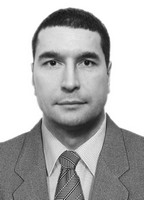Ischemic heart disease probability in athletes: detection and forecast rate
Фотографии:
ˑ:
Teoriya i praktika fizicheskoy kultury №2 2017, pp.49-51
UDC 796.01:612
Associate Professor, PhD D.D. Dalskiy1, 2, 4
Associate Professor, PhD K.V. Vashchenko2
Dr.Biol., Professor I.A. Afanasieva1
PhD E.V. Naumenko3
1National State University of Physical Culture, Sport and Health n.a. P.F. Lesgaft, St. Petersburg
2General A.V. Khrulev Military Academy for Logistics and Procurement, Saint Petersburg
3Medical Group of Special Service Brigade №45, Moscow
4St. Petersburg National Research University of Information Technologies, Mechanics and Optics, St. Petersburg
As demonstrated by a few recent studies by European and American sport medicine specialists, most of the sudden deaths of athletes could be prevented if the fatal cardiac diseases or overtraining conditions were diagnosed in a timely manner. The relevant national governments have made decisions to perform obligatory health screenings of the beginner athletes (aged 12-14 years which is the traditional beginner age for most of the sport disciplines) (M.V. Chashin, R.V. Konstantinov, 2010).
Objective of the study was to provide a theoretical substantiation for the ischemic heart disease (IHD) forecast rates in application to elite athletes. Based on the athletes’ health screening tests, the authors developed an IHD forecast index applicable to elite athletes that factors in the athlete’s age, anamnesis, genetic predispositions, living and training regime, body mass index (BMI), biochemical rates, arterial pressure hikes, HR, ECG and Echo-CG rate variations.
The study showed that the increased levels of atherogenic lipid fractions (total cholesterol, low-density cholesterol and triglycerides) contribute to the risks of ischemic heart disease (IHD) and myocardial infarction as its complication. Sport physicians are recommended to give more attention and time to targeted actions to prevent and detect predictors of the cardiac pathologies that put athletes at potentially fatal risk.
Keywords: sport, physical load, forecast index, heart rate, body building.
References
- Dal'skiy D.D. Praksismalnaya proba v sisteme otsenki funktsionalnogo sostoyaniya pauerlifterov [Paroxysmal test in functional status evaluation system for powerlifters]. Teoriya i praktika fiz. kultury, 2013, no.10, pp. 32-34.
- Meyerson F.Z., Pshennikova M.G. Adaptatsiya k stressovym situatsiyam i fizicheskim nagruzkam [Adaptation to stress and physical stress]. Moscow: Meditsina publ., 1988, 252 p.
- Chashchin M.V., Konstantinov R.V. Professionalnye zabolevaniya v sporte. Nauchno-prakticheskie rekomendatsii [Occupational diseases in sports. Guidelines]. Moscow: Sovetskiy sport publ., 2010, 176 p.




 Журнал "THEORY AND PRACTICE
Журнал "THEORY AND PRACTICE